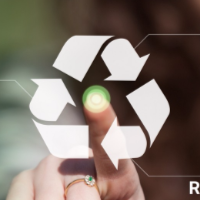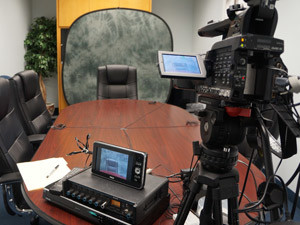Why Legal Videography Is Crucial for Accurate Court Recordings
The role of lawful videography in court setups can not be overemphasized, as it serves as a vital tool for protecting the integrity of court documents. The ramifications of incorporating legal videography into typical courtroom techniques elevate crucial inquiries about its wider effect on the lawful system.
Relevance of Visual Proof
In the realm of legal procedures, the importance of visual evidence can not be overstated. Visual evidence offers as a powerful device in establishing facts, supporting testimonies, and enhancing the general clearness of an instance. This sort of evidence, which includes photographs, videos, and representations, can give a tangible context that verbal descriptions typically do not have, consequently offering juries and judges a clearer understanding of the situations surrounding a situation.
Additionally, aesthetic proof aids in the retention of information. Human cognition is inherently visual, and people are more probable to keep in mind and comprehend info provided in a visual format. In the court room, this can be critical, as engaging aesthetic proof can persuade viewpoints and reinforce the narrative presented by lawful reps.
Additionally, the use of visual proof can decrease misconceptions and uncertainties that typically develop from verbal exchanges. By providing a direct representation of occasions, aesthetic evidence assists to remove subjective interpretations and cultivates a much more unbiased assessment of the truths. Subsequently, the integration of visual evidence into lawful proceedings not only strengthens the honesty of the judicial procedure however additionally enhances the likelihood of attaining a just outcome.
Catching Non-Verbal Cues
Making use of advanced videography techniques can considerably boost the capture of non-verbal hints throughout lawful proceedings. Non-verbal interaction, including faces, body movement, and eye call, plays a crucial function in conveying emotions and intentions that may not be clearly stated in spoken testament. legal videography. Legal videography uses high-definition cams and strategic angles to ensure that these refined signs are tape-recorded with quality and accuracy
The ability to examine non-verbal actions can offer important context to declarations made throughout court sessions. A witness's reluctance or confidence can be translated via their posture or gestures, potentially influencing the jury's understanding of integrity. Moreover, making use of close-up shots can help concentrate on a speaker's expressions, enabling for an extra nuanced understanding of the testament.
Furthermore, integrating numerous video camera angles can create a thorough view of communications, highlighting dynamics between celebrations included. This diverse method not only enhances the accuracy of the court document yet also help in preserving the integrity of the judicial procedure - legal videography. click over here Inevitably, recording non-verbal hints with legal videography fosters a richer, much more complete depiction of court room procedures

Enhancing Testimony Reliability
The integrity of statement can be significantly strengthened with the use of high-grade legal videography. Video clip recordings work as an unbiased medium that records not only the spoken words of witnesses yet also the subtleties of their distribution, consisting of tone, pacing, and emotional expressiveness. This multifaceted paperwork gives a clearer understanding of the witness's reliability and purposes, which can be critical in lawful proceedings.
Additionally, legal videography lessens the possibility for misconceptions that might develop from written transcripts alone. When jurors can observe a witness's temperament and body language in combination with their testimony, they are better furnished to assess the authenticity and integrity of the proof presented. This visual context can enhance the testimonial story, best site making it more compelling and credible.
Additionally, the existence of a video clip recording can deter prospective disparities in testament. Witnesses might be more cautious in their statements when they understand they are being videotaped, leading to more precise and sincere accounts. Generally, top notch lawful videography boosts the integrity of testimony, guaranteeing that the court has access to a total and genuine depiction of the facts as shared by the witnesses.
Sustaining Appeals and Reviews
Legal videography plays an important duty in sustaining allures and evaluations by providing a comprehensive visual record of court proceedings. This visual paperwork catches not just the talked words of witnesses and lawyers yet additionally the subtleties of body movement, intonation, and courtroom characteristics. Such elements can be pivotal in understanding the context of testimonies and debates offered.
In the appellate procedure, where the focus is on mistakes of legislation and procedural justness, a video record can work as an essential device for appellate courts. It allows judges to review the initial test context, making certain that decisions are based upon a total understanding of the proceedings. The ability to aesthetically evaluate the behavior of witnesses or the interactions in between events can expose understandings that written records may overlook.

Furthermore, lawful videography can help in clearing up obscurities in testimonies or step-by-step judgments, thus reinforcing the basis for a charm. By offering a reliable, objective account of what taken place in court, legal videography not only supports the stability of the legal procedure however additionally empowers all events involved to make educated choices concerning their instances.
Improving Courtroom Processes
Enhancing court performance, legal videography improves procedures by giving immediate accessibility to visual records of procedures. This technology enables judges, lawyers, and courts to take another look at crucial statement and evidence, making certain that all events have a clear understanding of the situation. By capturing the subtleties of spoken and non-verbal communication, videography enriches the document, making it simpler to understand the context and weight of statements.

Furthermore, video recordings can facilitate remote engagement in hearings, permitting greater adaptability in scheduling and participation, which is particularly beneficial in intricate situations involving multiple stakeholders.
Verdict
Finally, legal videography plays a crucial role in making sure exact court recordings by offering important aesthetic evidence that catches find this both spoken and non-verbal communication. This technique enhances the dependability of testaments, supports appellate testimonials, and improves court room procedures. By fostering an extensive understanding of courtroom dynamics, lawful videography inevitably adds to extra equitable judicial end results, reinforcing the integrity of the legal system and facilitating informed decision-making.